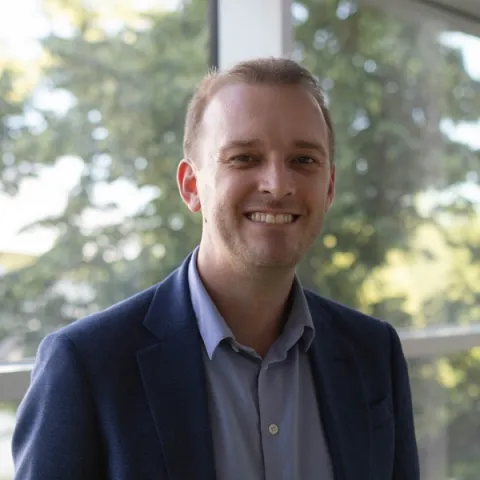Project overview
Graphene is ideal for opto-electronics due to its high carrier mobility at room temperature, electrically tuneable optical conductivity, and wavelength independent absorption. Graphene has opened a floodgate for many layered materials (LMs). For a given LM, the range of properties and applications can be tuned by varying the number of layers and their relative orientation. LM heterostructures (LMHs) with tailored properties can be created by stacking different layers. The number of bulk materials that can be exfoliated runs in the thousands, but few have been studied to date.
The layered materials research foundry (LMRF) will develop a fully integrated LM-Silicon Photonics platform, serving 5G, 6G and quantum communications, facilitating new design concepts that unlock new performance levels.
Graphene and the other non-graphene LMs are at two different stages of development. Graphene is more mature, and can now target functionalities beyond the state of the art in technologically relevant devices. In (opto-)electronics, photonics and sensors, graphene-based systems have already demonstrated extraordinary performance, with reduced power consumption, or photodetectors (PDs) with hyperspectral range for applications such as autonomous driving, where fast data exchange is a critical requisite for safe operation. Applications in light detection and ranging, security, ultrasensitive physical and chemical sensors for industrial, environmental and medical technologies are beginning to emerge and offer great promise. These technologies must be developed to achieve full industrial impact.
The other non-graphene LMs are also at the centre of an ever increasing research effort as a new platform for quantum technology. They have already shown their potential, ranging from scalable components, such as quantum light sources, photon detectors and nanoscale sensors, to enabling new materials discovery within the broader field of quantum simulations. The challenge is understanding and tailoring the excitonic properties and the nature of the single photon emission process, as well as to make working integrated devices. Quantum emitters in LMs hold potential in terms of scalability, miniaturisation, integration with other systems and an extra quantum degree of freedom: the valley pseudospin. A major challenge is to go beyond lab demonstrators and show that LMs can achieve technological potential. The LMRF will accelerate this by enabling users to fabricate their devices in a scalable manner, with comparable technology to large-scale manufacturing foundries. This scalability is essential for LMs to become a disruptive technology.
The vision is to combine the best of Silicon Photonics with LM-based optoelectronics, addressing key drawbacks of current platforms. ICT systems are the fastest growing consumers of electricity worldwide. Due to limitations set by current CMOS technology, energy efficiency reaches fundamental limits. LM-based optoelectronics builds on the optical/electronic integration ability of Silicon Photonics, which benefits product costs, but with modulator designs simpler than conventional Silicon Photonics at high data rates, giving lower power consumption.
The layered materials research foundry (LMRF) will develop a fully integrated LM-Silicon Photonics platform, serving 5G, 6G and quantum communications, facilitating new design concepts that unlock new performance levels.
Graphene and the other non-graphene LMs are at two different stages of development. Graphene is more mature, and can now target functionalities beyond the state of the art in technologically relevant devices. In (opto-)electronics, photonics and sensors, graphene-based systems have already demonstrated extraordinary performance, with reduced power consumption, or photodetectors (PDs) with hyperspectral range for applications such as autonomous driving, where fast data exchange is a critical requisite for safe operation. Applications in light detection and ranging, security, ultrasensitive physical and chemical sensors for industrial, environmental and medical technologies are beginning to emerge and offer great promise. These technologies must be developed to achieve full industrial impact.
The other non-graphene LMs are also at the centre of an ever increasing research effort as a new platform for quantum technology. They have already shown their potential, ranging from scalable components, such as quantum light sources, photon detectors and nanoscale sensors, to enabling new materials discovery within the broader field of quantum simulations. The challenge is understanding and tailoring the excitonic properties and the nature of the single photon emission process, as well as to make working integrated devices. Quantum emitters in LMs hold potential in terms of scalability, miniaturisation, integration with other systems and an extra quantum degree of freedom: the valley pseudospin. A major challenge is to go beyond lab demonstrators and show that LMs can achieve technological potential. The LMRF will accelerate this by enabling users to fabricate their devices in a scalable manner, with comparable technology to large-scale manufacturing foundries. This scalability is essential for LMs to become a disruptive technology.
The vision is to combine the best of Silicon Photonics with LM-based optoelectronics, addressing key drawbacks of current platforms. ICT systems are the fastest growing consumers of electricity worldwide. Due to limitations set by current CMOS technology, energy efficiency reaches fundamental limits. LM-based optoelectronics builds on the optical/electronic integration ability of Silicon Photonics, which benefits product costs, but with modulator designs simpler than conventional Silicon Photonics at high data rates, giving lower power consumption.

